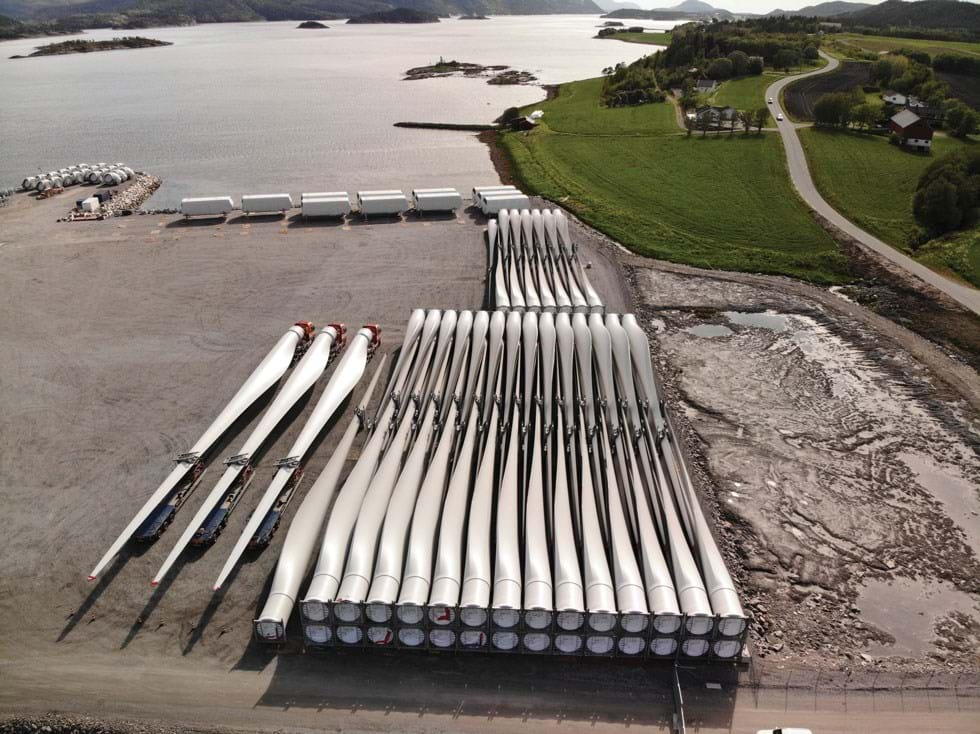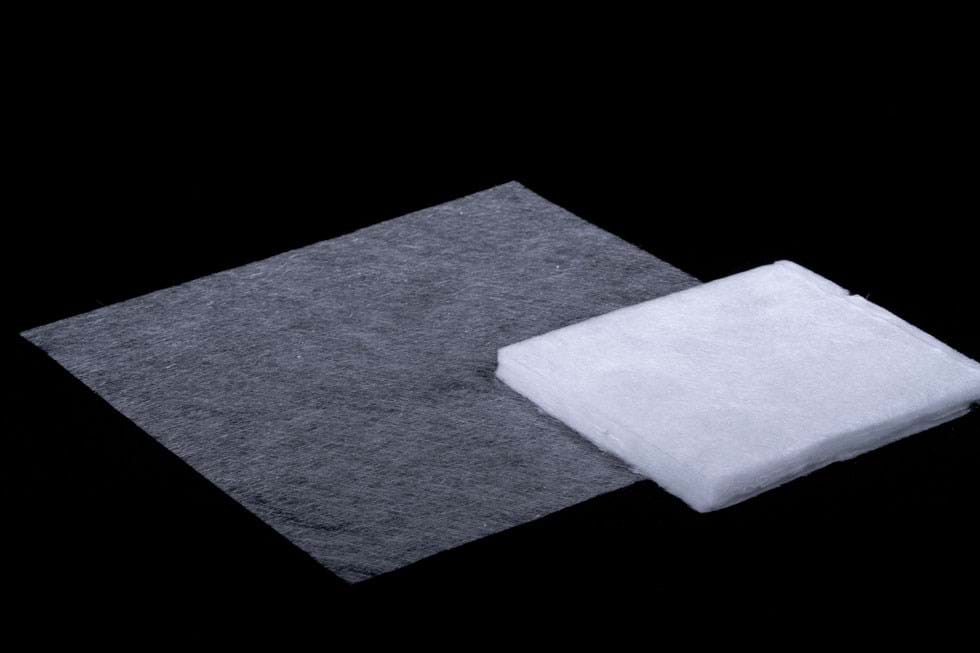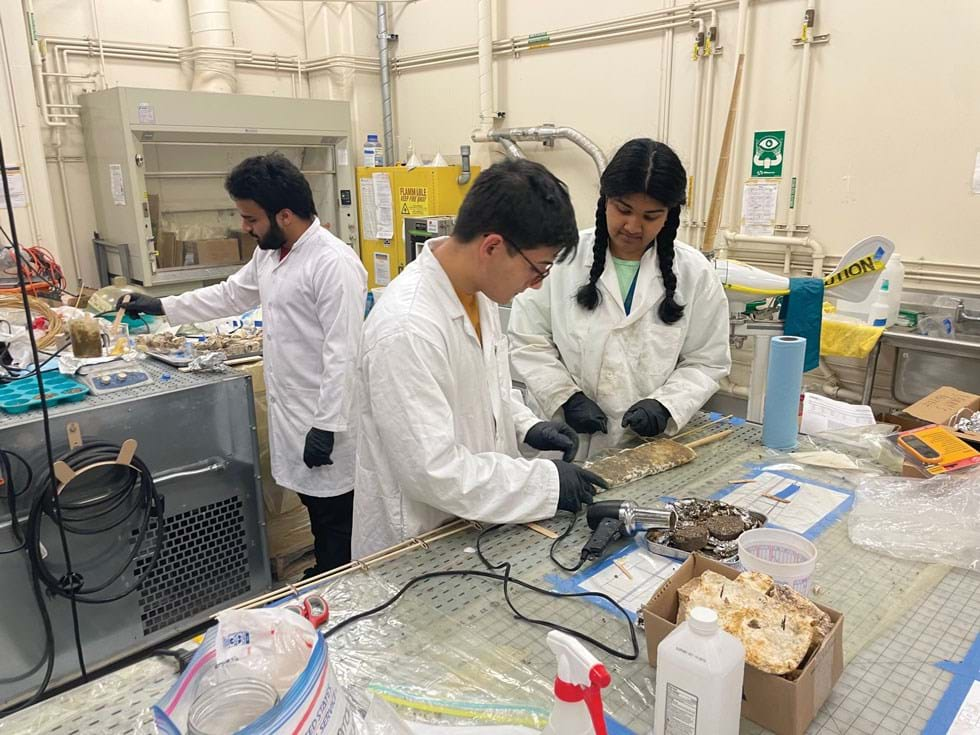Making Wind Power More Sustainable
Designed to withstand decades of strong winds and harsh weather conditions, wind turbine blades are built to last – a problem when it comes to recycling. Kerry Hebden spoke to two innovative companies with contrasting solutions
SEEN as vital to achieving net zero, wind power’s clean energy credentials are not in question. However, when it comes to a blades’ end of life, the climate benefits are in short supply.
The most common solution for turbine blade disposal has been to send them to landfill – an end-of-life scenario that hardly fulfils the “green dream”. Some are refashioned into other purposes, such as bike shelters, but ultimately their fate remains the same when their usefulness is over – a long, slow rot in a very large hole. While materials and manufacturing techniques are likely to evolve over time to be more sustainable, current studies suggest by 2050, the environment could be burdened with over 40m t of blade waste.
Rethinking a blade’s recycling potential – all 75+ m of it for the big ones – so that it can contribute to a clean and sustainable economy, is therefore needed, and one company, Carbon Rivers, says it has the answer.
Founded in 2017 by Bowie Benson and a team of engineers from Oak Ridge National Lab, Carbon Rivers developed a proof of concept for a glass fibre recovery technology after engagement with the US Department of Energy for a Small Business Innovative Research grant.
Dubbed G2G+ (glass to glass reclamation), the process works by first cutting a wind turbine blade into smaller pieces, mechanically sorting the pieces, and shredding them until the mixture resembles woodchip mulch. The resulting feedstock is then fed into a low temperature thermal reactor. A multi-stage pyrolysis process fully separates polymers, char, and other fillers from the glass fibres, and once the polymers crack, light and heavy hydrocarbons are produced.
“The light hydrocarbons become syngas that is recirculated in the system, while the heavy hydrocarbons condense in a tank to produce a renewable crude oil,” explained David Morgan, Carbon Rivers’ chief strategy officer. Morgan says the team were surprised at how much renewable crude oil was produced in the process, but the quality is so good that it can be used as an alternative fuel source or as a precursor for next generation polymers once the oil has been properly fractionated.
After the glass is recovered, Carbon Rivers applies its own in-house surface chemistry to size the glass. Sizing is the process of applying a thin surface coating of mainly organic materials to freshly pulled glass fibres. While a complex size formulation can include lubricating agents, antistatic agents, and surfactants, at the basic level, a film former and a coupling agent are used. The film former protects and lubricates the fibres and holds them together prior to composite processing, and the coupling agent, which is often made from an alkoxysilane compound, bonds the fibres to the matrix resin.

The trouble with wind turbine blades
Blade composition varies by manufacturer, but typically most are made of glass fibre-reinforced polyester or epoxy. Epoxy resins are among the most versatile thermosets and are typically hard and rigid – great for when high strength and stiffness is required. However, thermosets also form irreversible solid polymers, and this makes it challenging to physically break them apart, and therefore recycle them.
“Then the glass is ready to either be sold to offtake customers as a staple glass fibre or it can be tailored for various intermediates depending on the needs of the customer,” Morgan said. He explained that whatever form factor a customer wants for the glass, such as for use in thermoplastics, nonwovens, or additive manufacturing for example, they can provide it. This selection of end products is thanks to trial and error the team experienced within the process.
“Initially, our tests involved making sure that the temperature of the thermal reactor was not degrading the glass any more than necessary, and that it was just enough to really crack the polymer and separate the hydrocarbons from the glass, in order for us to extract that out,” Morgan said. “But we have also made many considerations to make sure that customers got what they wanted at the end of the day, from different glass fibre lengths on the downsizing and shredding side of things, to applying mechanical performance on the glass through resizing.”
Carbon Rivers’ technology also produces other valuable byproducts such as glass fibre fines, calcium carbonate, and carbon black, and it isn’t just used to recycle wind turbine blades. It can work with any type of end of life or post-industrial thermoset thermoplastics that include glass fibre, such as marine vessels, aerospace, building materials, and those from the automotive industry.
“So far, we have not come across a composite material that we weren’t able to separate and recover glass from. That’s not to say there won’t be any, but so far, we’re very happy with where we’re at,” Morgan said. “It’s now at commercial readiness, and the process should scale up nicely.”
The firm has its own logistics arm to deal with transporting the blades, and it still has ties with Oak Ridge. “We are working with them on our life-cycle assessment scope one and two emissions,” Morgan added. “For both the mechanical downsizing and the glass fibre recovery aspect, the processes are carbon negative. That’s fantastic for us, and the customers we work with.”

Until now, the most common solution for blade disposal has been to send them to landfill – an end-of-life scenario that hardly fulfils the “green dream”
Sustainable alternatives
Recycling blades currently in circulation is one way to help curb waste, another is to build new ones from materials that are more sustainable.
One novel route being explored by polymer composites expert Valeria La Saponara, a professor in the Department of Mechanical and Aerospace Engineering at the University of California, Davis, is wind turbine blades made from bamboo and mycelium. Mycelium is the white, 3D filament-like root structure of fungi, and along with being heat-resistant, lightweight, and hydrophobic, it can be moulded into different shapes as it grows.
To stop it growing, heat is typically applied. This hardens the structure and gives it a toughness similar to a dense foam. But as it is natural, it has the added advantage of being compostable.
Keen to find alternatives to polystyrene and polyurethane, La Saponara first used mycelium as a replacement for polystyrene used in children’s bike helmet liners. But, aware of the environmental problem of buried wind turbine blades, La Saponara teamed up with Michele “Mike” Barbato and Camli Badria, and with the aid of a seed grant from UC Davis, shifted her attention to seeking a solution to a much bigger problem.
One of the first stumbling blocks La Saponara encountered was that the mycelium would not grow as expected. It turned out the problem was caused by not sterilising the biomass before inoculation – the process of transferring microorganisms from culture to medium. Sterilisation is required as it kills off competition from other microbial species.
“It took a bit of figuring out at first, because as an aerospace engineer my training is in composite materials that typically contain carbon and glass fibres,” La Saponara said. “I never did much biology,” she added.
Perhaps one of the more underrated attributes of mycelium, is that it takes on the mechanical properties of whatever it grows on. More specifically, it is the condition and size of the fibres that make a difference. Give it fibres of hemp or flax chopped up in a blender to feed on, and once processed it will have a higher compressive stiffness than loose versions of the same feedstock.
For La Saponara, what makes this an attractive idea, is that just about any agricultural waste can be used to grow mycelium on, once the right conditions are found − mycelium needs a lightly acidic environment to grow.
“I started my experiments with almond shells, as I live in California, and it is the largest producer of almonds in the world. Usually though the shells are either burned or sent to landfill,” explained La Saponara. “However, it doesn’t have to be agricultural waste that is used. If a country has a problem with an invasive plant species, find out which species of fungal mycelium eats it, and it now becomes a useful biomass to grow mycelium.”
The other advantage of using almond waste, is that it is a good source of carbon, said La Saponara, but it became clear that for optimum growth, nitrogen was also needed. “For that I use fava beans, a well-known cover crop (fixing nitrogen in the soil) in California.”

The other main aspect to the compostable wind turbine blade, is bamboo. Bamboo has a number of positives, it is fast growing, it can bend without breaking, is more durable and lighter than wood, and has a higher strength-to-weight ratio than steel and concrete. The idea to use it turned out to be a fortuitous one, as one of La Saponara’s students, Shuhao Wan, a highly multidisciplinary researcher, was also a skilled bamboo artisan. “I just happened to be focused on bamboo, and he was actually the right person to do this, as he knows different ways to weave the bamboo reeds,” La Saponara said.
One of the downsides of using bamboo, however, is that it is antifungal, which meant a suitable interface material between bamboo and mycelium had to be found. To make the blade as sustainable as possible, the other aim was to bond it all together with biodegradable glue. La Saponara was introduced to pine resin glue following a serendipitous chat with an engineer whom she invited to give a talk to her class. Pine sap is naturally sticky and viscous, and it can be turned into a glue through the application of heat and a temper material such as crushed charcoal powder. It was just what was needed to complete the construction of a prototype blade. The team has built one 400 W wind turbine blade and is now working on a 1 kW turbine to replace blades on a commercial set-up that will be installed near the STEEL Lab at UC Davis.
“What I am hoping for, is to raise funding to get to 10 kW, because that’s when it starts to become a commercial product,” La Saponara said. “My goal would be to have something that can be packaged very neatly, and brought to an area quickly, for example, to help bring power where there has been some sort of natural disaster.” This would allow power to be produced very quickly, and once done, the blades could be composted where the turbine was used, without any worries that it contaminated the local environment, she added.
“We’ve got this far because I have had the opportunity to work with a variety of engineers, who care about the environment,” she added. “Having a multidiscipline team is key to working outside of the box, and creating solutions to the climate problems we face”
With the exception of the ribs in the blade, which are made from plywood, and the 3D printed connector, that fits between the rotor and the blade, La Saponara said the wind turbine blade is around 95% biodegradable per surface per weight. It’s now just about the finishing touches, such as finding treatments to protect the bamboo against water and insects – the team are investigating a solution of borax and boric acid used in the construction industry − and perfecting the mycelium drying process to stop it growing, but without degrading its material properties. There is the possibility of scaling up the process too.
The blade may not be a rival for the huge turbines seen offshore, but its carbon footprint is really low depending on where you source your materials, La Saponara said. “We’ve got this far because I have had the opportunity to work with a variety of engineers, who care about the environment. Having a multidiscipline team is key to working outside of the box, and creating solutions to the climate problems we face.”
Recent Editions
Catch up on the latest news, views and jobs from The Chemical Engineer. Below are the four latest issues. View a wider selection of the archive from within the Magazine section of this site.




